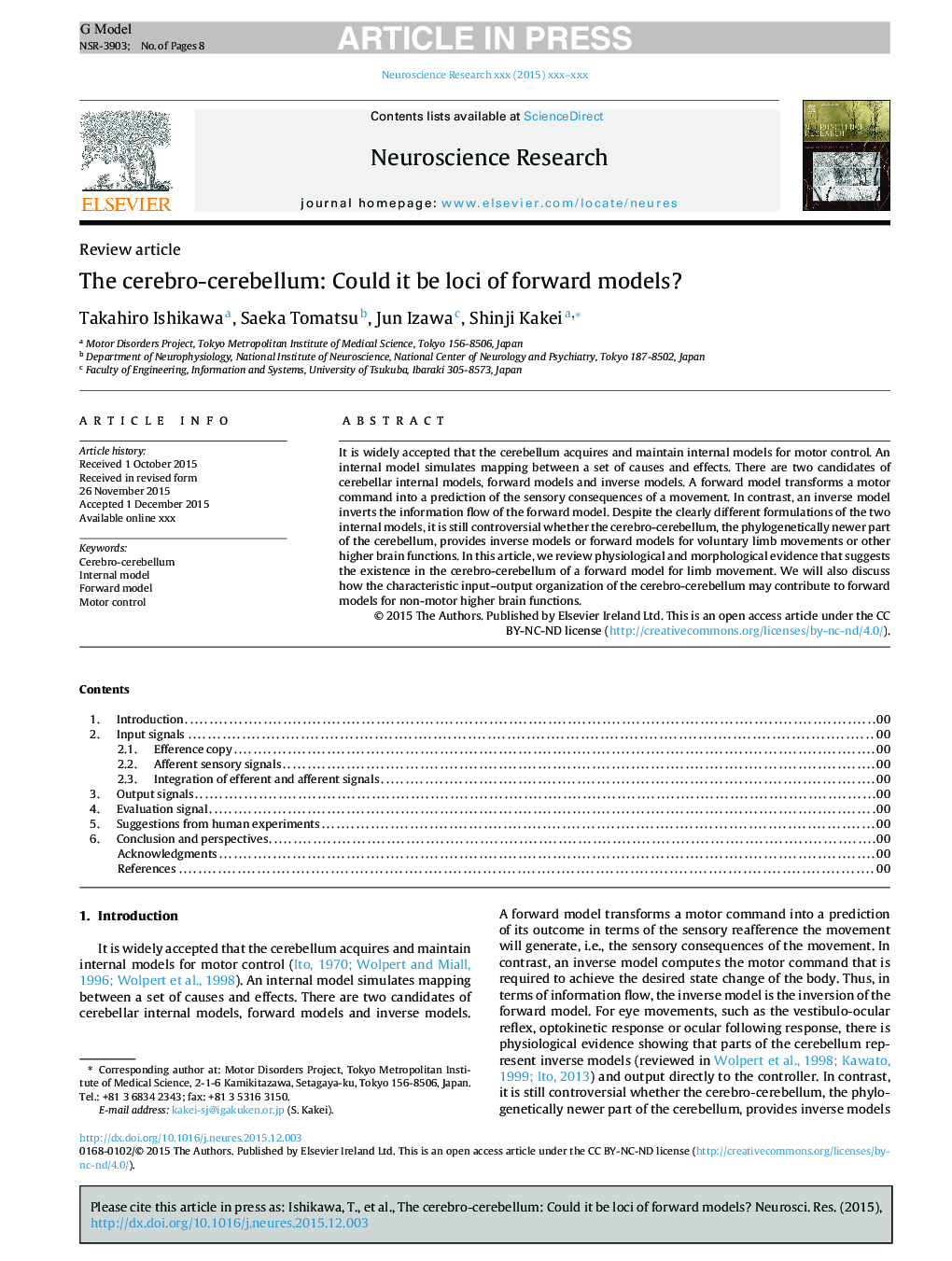| Article ID | Journal | Published Year | Pages | File Type |
|---|---|---|---|---|
| 6286082 | Neuroscience Research | 2016 | 8 Pages |
Abstract
It is widely accepted that the cerebellum acquires and maintain internal models for motor control. An internal model simulates mapping between a set of causes and effects. There are two candidates of cerebellar internal models, forward models and inverse models. A forward model transforms a motor command into a prediction of the sensory consequences of a movement. In contrast, an inverse model inverts the information flow of the forward model. Despite the clearly different formulations of the two internal models, it is still controversial whether the cerebro-cerebellum, the phylogenetically newer part of the cerebellum, provides inverse models or forward models for voluntary limb movements or other higher brain functions. In this article, we review physiological and morphological evidence that suggests the existence in the cerebro-cerebellum of a forward model for limb movement. We will also discuss how the characteristic input-output organization of the cerebro-cerebellum may contribute to forward models for non-motor higher brain functions.
Related Topics
Life Sciences
Neuroscience
Neuroscience (General)
Authors
Takahiro Ishikawa, Saeka Tomatsu, Jun Izawa, Shinji Kakei,
